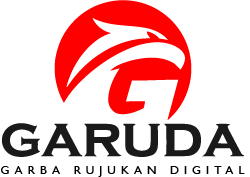GENDER REPRESENTATION IN THE ENGLISH TEXTBOOK ENTITLED “PATHWAY TO ENGLISH FOR SMA/MA GRADE Xâ€
DOI:
https://doi.org/10.22460/eltin.v10i2.p157-165Kata Kunci:
Equality, Gender, Gender Bias, Representation, TextbookAbstrak
Understanding gender equality is crucial in education to reduce sexual bias and sexual violence. As the textbook is one of the most important teaching tools in ELT, it is important to represent the issues of gender equality. The representation of gender, however, needs to be planned carefully in order to avoid gender bias. This present study aims to analyze whether gender was represented equally or not in one of the Indonesian English textbooks. This research applied content analysis and critical discourse analysis. The data source of this research was taken from “Pathway to English for SMA/MA grade X’. The data then was analyzed based on the eight-factors procedures as proposed by Amerian and Esmaili (2015). It was revealed that the textbook did not fairly present both genders. The representations of men in the contents of the textbook were found to be higher in numbers than the representations of women. Based on the findings, it is suggested that English book writers need to be more careful in using any content related to gender. They need to present both genders equally in order to promote awareness of gender equality.ÂReferensi
Ahmad, M., & Shah, S. K. (2019). A critical discourse analysis of gender representations in the content of 5th grade english language textbook. International and Multidisciplinary Journal of Social Sciences, 8(1), 1–24. https://doi.org/10.17583/rimcis.2019.3989
Aljuaythin, W. (2018). Gender Representation in EFL Textbooks in Saudi Arabia: A Critical Discourse Analysis Approach. International Journal of Applied Linguistics and English Literature, 7(5), 151. https://doi.org/10.7575/aiac.ijalel.v.7n.5p.151
Amerian, M., & Esmaili, F. (2015). Language and gender: A critical discourse analysis on gender representation in a series of international ELT textbooks. International Journal of Research Studies in Education, 4(2). https://doi.org/10.5861/ijrse.2014.963
Banyard, V. L., Edwards, K. M., Rizzo, A. J., Theodores, M., Tardiff, R., Lee, K., & Greenberg, P. (2019). Evaluating a gender transformative violence prevention program for middle school boys: A pilot study. Children and Youth Services Review, 101(November 2018), 165–173. https://doi.org/10.1016/j.childyouth.2019.03.052
Ena, O. T. (2013). Visual analysis of e-textbooks for senior high school in Indonesia. ProQuest Dissertations and Theses, May, 128. https://search.proquest.com/docview/1415874836?accountid=17242
Ena, O. T. (2016). Religion Representation in Indonesian e-Textbooks: A Visual Content Analysis. In Language Literature & Society.
Ena, O. T., Yulia, M. F., & Prabandari, C. S. (2016). Gender Roles and Representations in the English E-Textbooks for Junior High School in Indonesia. The Asian EFL Journal Professional Teaching Articles, 96.
Fahriany, F., Alek, A., & Wekke, I. S. (2019). Gender Representation in English Textbooks for Islamic Junior High School Students. Kafa`ah: Journal of Gender Studies, 8(2), 149. https://doi.org/10.15548/jk.v8i2.221
Fairclough, N. (2020). Language and power 2000. In Language and Power (Issue 2003). https://doi.org/10.4324/9781315838250-15
Gharbavi, A., & Mousavi, S. A. (2012). A Content Analysis of Textbooks: Investigating Gender Bias as a Social Prominence in Iranian High School English Textbooks. English Linguistics Research, 1(1), 42–49. https://doi.org/10.5430/elr.v1n1p42
Goyal, R., & Rose, H. (2020). Stilettoed Damsels in Distress: the (un)changing depictions of gender in a business English textbook. Linguistics and Education, 58, 100820. https://doi.org/10.1016/j.linged.2020.100820
Mengistie, S. M., & Worku, M. Y. (2021). Gender Representation in Educational Materials: A Focus on Ethiopian English Textbooks. April 2022, 599–611. https://doi.org/10.1007/978-3-319-95687-9_137
Mullet, D. R. (2018). A General Critical Discourse Analysis Framework for Educational Research. Journal of Advanced Academics, 29(2), 116–142. https://doi.org/10.1177/1932202X18758260
Neuendorf, A. K. (2019). Polarization and Partisan Bias (Second Edi). SAGE Publications.
Rinekso, A. B. (2021). THE REPRESENTATION OF 21st CENTURY SKILLS IN AN INDONESIAN EFL TEXTBOOK. LLT Journal: A Journal on Language and Language Teaching, 24(1), 191–211. https://doi.org/10.24071/llt.v24i1.2655
Sharma, M., & Parika. (2020). Gender Bias In Education. European Journal of Molecular & Clinical Medicine, 07(07), 6145–6151. https://doi.org/10.1007/s40953-016-0038-3
Yonata, F., & Mujiyanto, Y. (2017). The Representation of Gender in English Textbooks in Indonesia. Journal Lof Language and Literature, 12(1), 91–102. https://doi.org/10.1080/14681366.2012.669394
Zarina, Q. (2018). Gender Representation in English Textbooks: A Quantitative and Qualitative Content Analysis. Journal of Educational Sciences & Research, 5(2), 1–19. https://jesar.su.edu.pk/uploads/journals/Volume_No__5,_Issue_No_2,_Article_No_1.pdf









